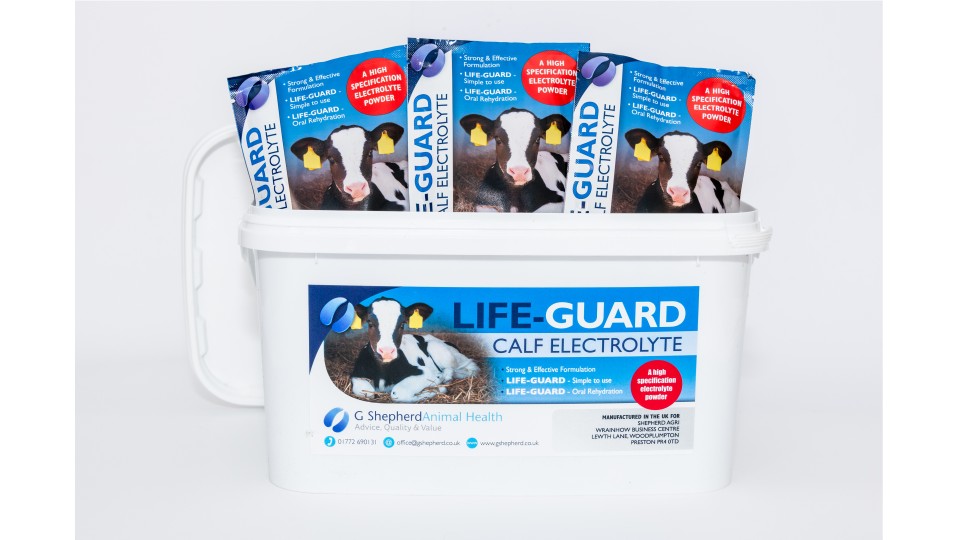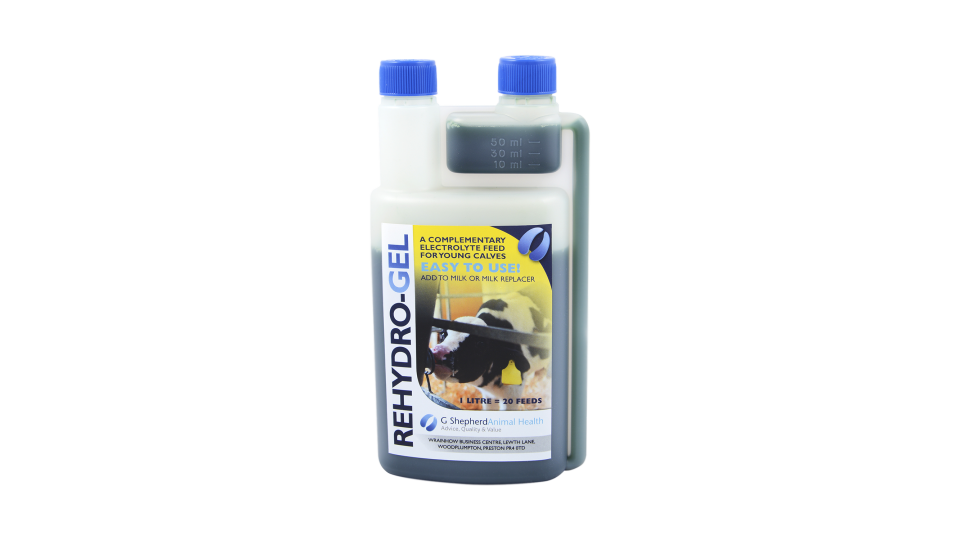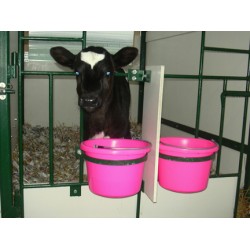As scour is the largest cause of mortality in young calves, it is important that the problem is managed as effectively as possible. Katie Fallon looks at the role electrolytes could play in this.


Scour accounts for 50% of all calf deaths and, while calves can recover, they may experience reduced growth, delayed calving and reduced lifetime production as a result, says Dr Graham Shepherd, of G. Shepherd Farm Animal Health.
Both infection and nutritional issues can cause calf scour, says Dr Shepherd, with diseases such as rotavirus and cryptosporidium being common causes.
However, changes to milk consumption in terms of quantity and quality can be a nutritional cause.
“When calves scour their gut lining is damaged, which results in less food being digested,” says Dr Shepherd.
He explains it also causes toxins which drive water and salt loss from the calf and, as a result, directs them into the bowel causing a large amount of watery diarrhoea. This results in the calf becoming dehydrated.
Blood and tissue fluids also become too acidic for the calf to handle, causing acidosis. Dr Shepherd says: “Acidosis is a powerful depressant and is usually what will kill the calf.”
Because of this, he advises always using an electrolyte with an alkalinising agent.
The two main electrolytes for calves in the UK are either a sachet or a liquid, says Dr Shepherd.
He says: “Sachets containing an accurate amount of well mixed powder formulation are usually for mixing with water not milk.”
Water mixed formulations can be fed by a stomach tube to calves which will not drink but can stand and have a suck reflex.
Liquid electrolytes are formulated for mixing with milk or a milk replacer, says Dr Shepherd.
He says: “These can be used when the calf is drinking voluntarily, but should not be fed by a feeding tube.”
An advantage of liquid electrolytes is their simple feeding, says Dr Shepherd.
He says: “By adding them to the milk or feeding alongside milk, the calf can still benefit from the milk’s feed value, which is important as starvation starts to affect the gut adversely after two days.”
In terms of what is in a good electrolyte, Dr Shepherd says labels can be ‘complicated’ and the units ‘complex’ and, while you might think you need to be a chemist to work them out, most reputable formulations fit into the recommendations.
Water is vital and Dr Shepherd advises that in addition to electrolyte feeds, calves should always have access to water.
He says: “Calves are 75% water and need 10% of their body weight in water per day.”
He says that diarrhoea can increase a calf’s water requirement between one and four litres per day.
Dr Shepherd says salt levels in electrolytes, including sodium, potassium and chloride levels are well researched.
“Products which are too low in sodium will not adequately restore hydration in the calf, but products which are too high may increase the risk of sodium poisoning, if access to water is not available.”
Dr Shepherd advises checking the label of liquid electrolytes when using them with milk powder, as whey-based powders can be high in salt.
“Dextrose and glycine are components of electrolytes which help to drive water and salt back into the cells and the body, however, too much dextrose can be detrimental.”
He also says dextrose is included within formulations to help rehydration, but it is not a food source, so calves benefit from milk as well. Whereas glycine is not required with milk products as the milk provides enough amino acid on its own.
Bicarbonate or similar alkalinising agents are used in electrolytes to neutralise excess acid in the calf’s blood and tissues, says Dr Shepherd.
He says bicarbonate and citrate are good, but should not be fed with milk or within a four-hour window after being fed milk. He says that acetate is a better alkaliniser.
In terms of scour management, Dr Shepherd advises to always suspect scour if a calf looks dull or is slow to feed.
Dr Shepherd says: “Sometimes if the calf is just starting to scour, diarrhoea can be watery and is not seen on the bedding.”
He advises taking the calf’s rectal temperature to stimulate the flow of scour.

Method
Dr Graham Shepherd advises feeding electrolytes early, with the simplest method of feed being to add a liquid electrolyte into the milk for two to three days, with clean bedding and access to water.
He advises oral rehydration therapy as the standard nutritional support for scouring calves with a good suck reflex, which can stand and only show mild depression signs.
If the calf is standing, but has a weak suck reflex, Dr Shepherd advises being ‘aggressive’ with water-based oral fluids, fed by a stomach tube.
“If the calf is unable to stand or has no suck reflex, you need veterinary advice, as it will need intravenous fluids.
“If scour is common or severe then you need to involve your vet to diagnose the cause. Reaching the true cause can often be less than straightforward and is often a mixture of issues.”






